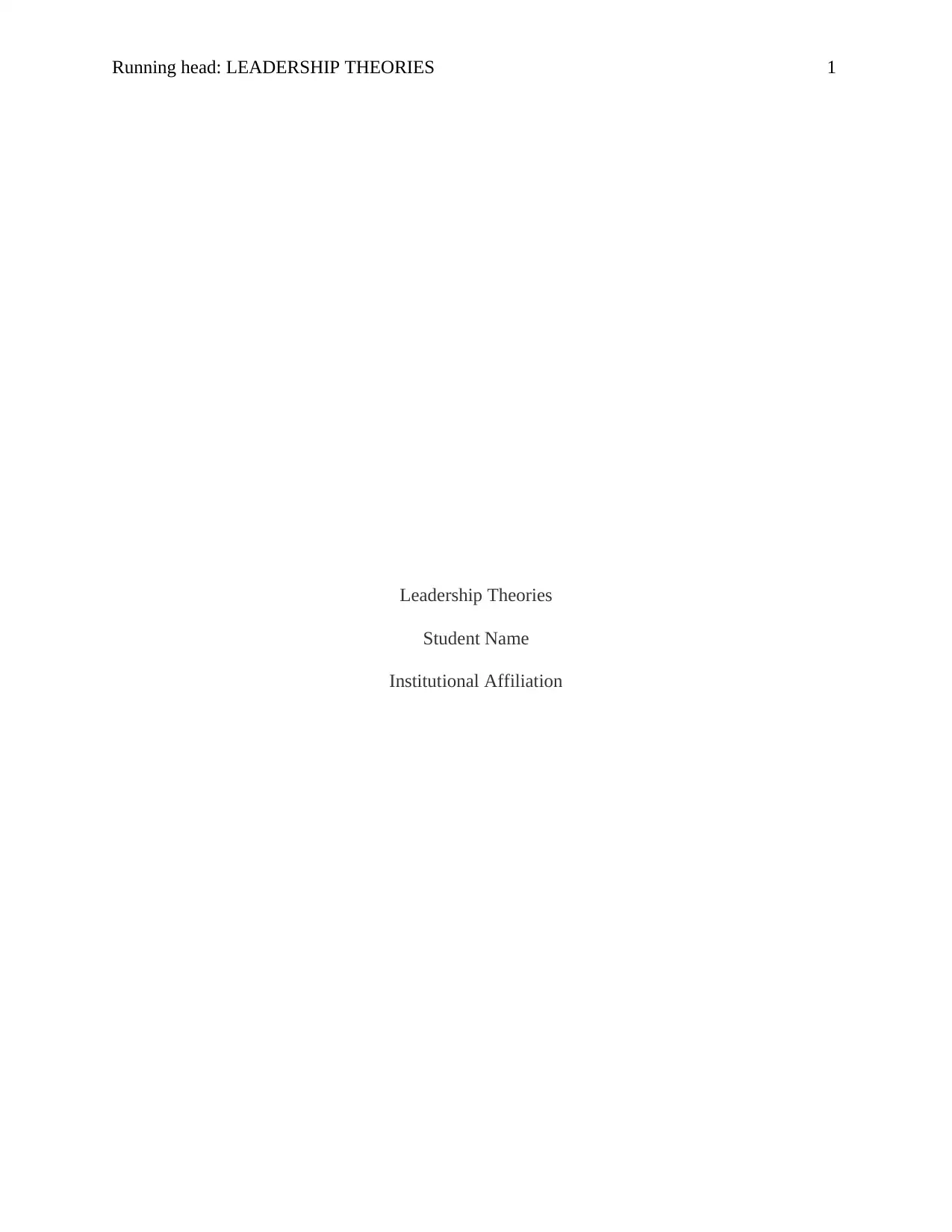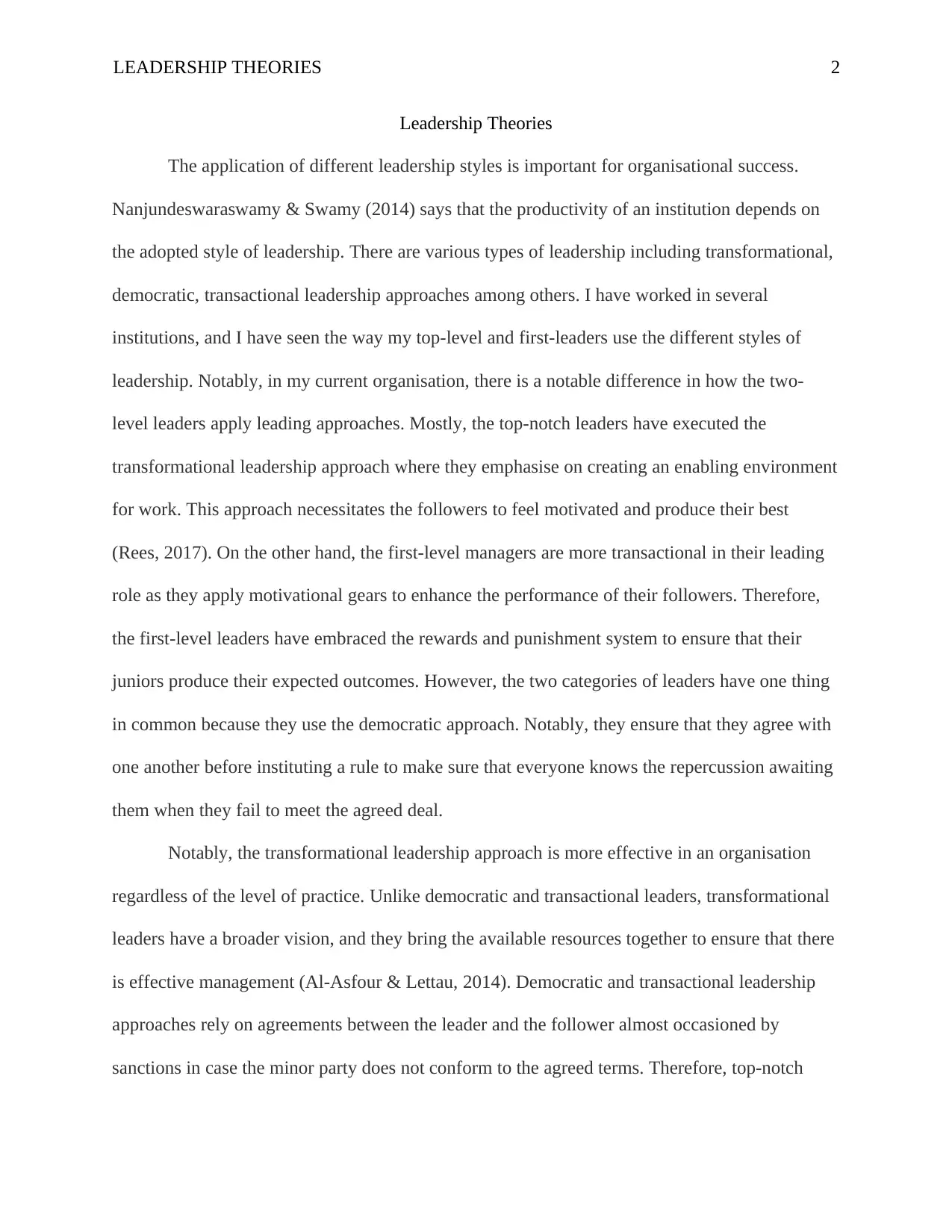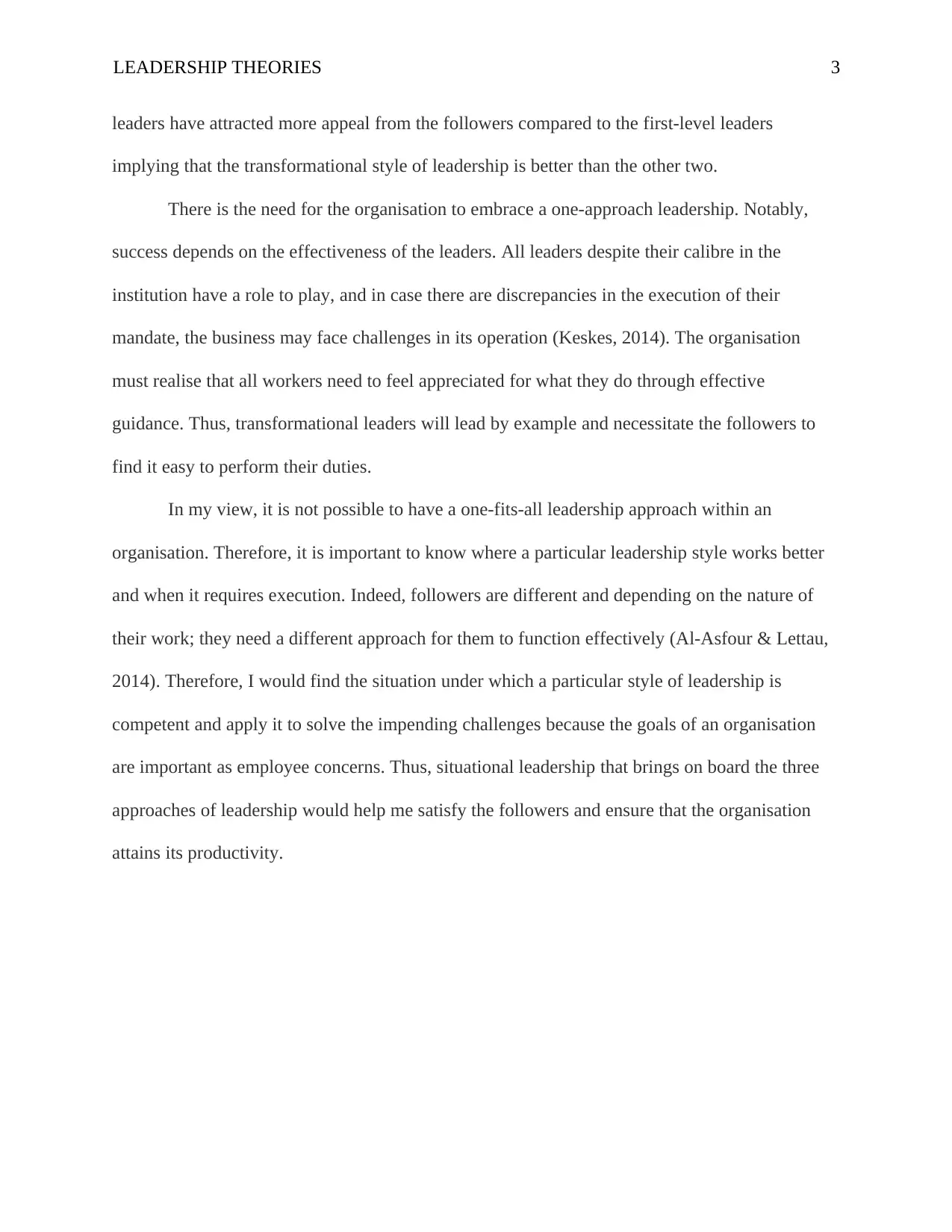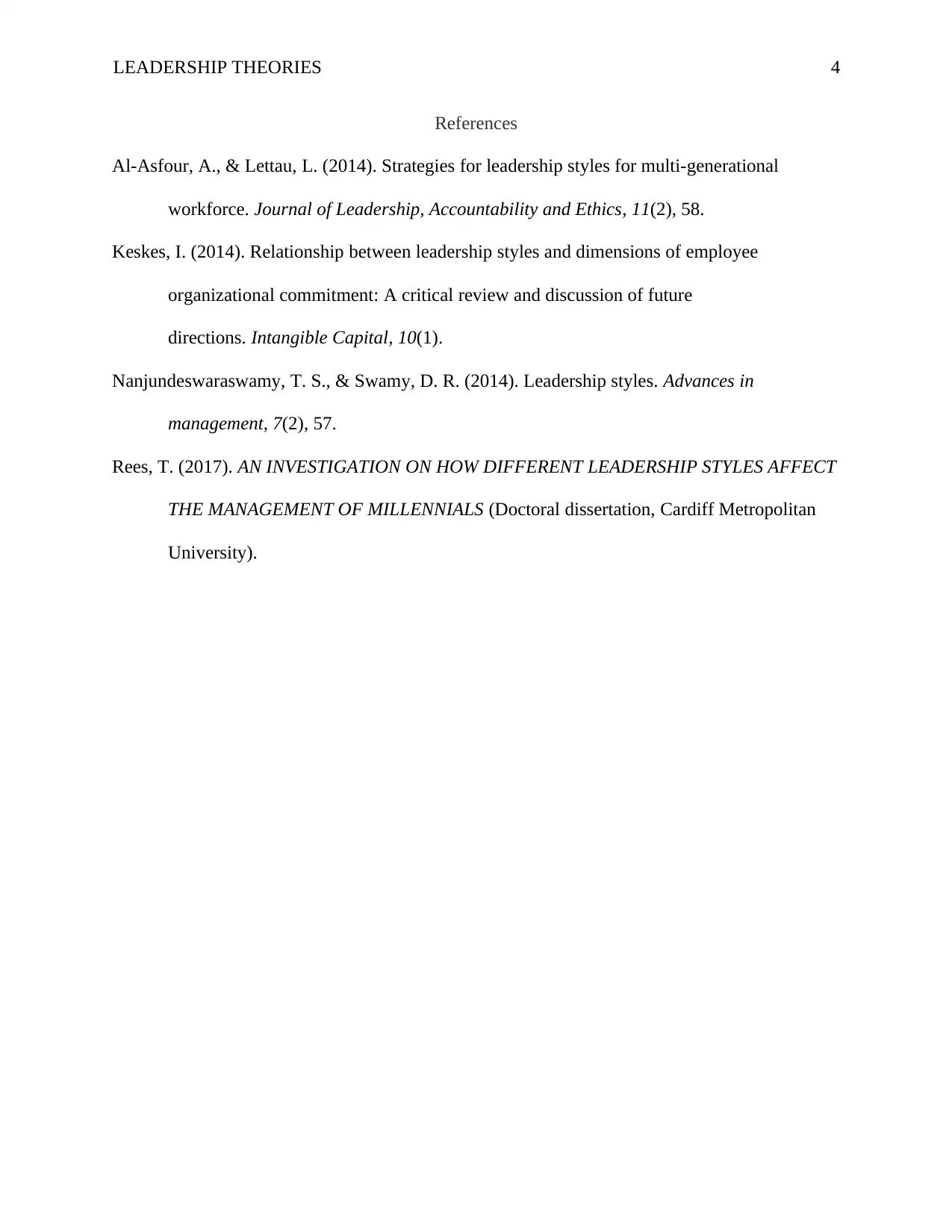Leadership Theories: Application and Effectiveness in Organizations
VerifiedAdded on 2023/06/10
|4
|742
|461
Essay
AI Summary
This essay examines various leadership theories and their practical application within organizations. The author contrasts transformational, transactional, and democratic leadership styles, drawing from personal experiences in different workplaces to illustrate their impact. The essay highlights the effectiveness of transformational leadership in fostering employee motivation and creating a positive work environment, while also acknowledging the role of transactional and democratic approaches. It argues that a situational leadership approach, which integrates elements of all three styles, is the most effective way to address diverse employee needs and organizational goals. The author emphasizes the importance of adapting leadership styles to specific contexts and employee characteristics to maximize productivity and overall organizational success. The essay concludes by advocating for a flexible leadership approach that prioritizes both employee well-being and organizational objectives.
1 out of 4










![[object Object]](/_next/static/media/star-bottom.7253800d.svg)